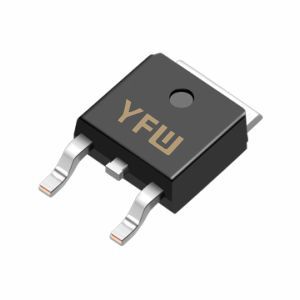Date:2025-04-15 Categories:Product knowledge Hits:558 From:Guangdong Youfeng Microelectronics Co., Ltd
Gate (G): This is a crucial control element, often made of metal in early designs, but in modern devices, polysilicon is more commonly used due to its compatibility with semiconductor manufacturing processes. It is insulated from the underlying channel by an extremely thin layer of SiO₂. This insulation is vital as it allows for the application of an electric field without direct electrical connection, which in turn controls the flow of charge carriers in the channel. For example, in a high - speed integrated circuit, the gate serves as a switch that can rapidly turn on or off the current flow between the source and the drain.
Drain (D) and Source (S): These are heavily doped N⁺ regions. The high doping concentration in the N⁺ regions ensures that there is an abundant supply of electrons, which are the majority charge carriers in N - type materials. They are embedded within a P - type silicon substrate. The P - type substrate provides a base upon which the N⁺ regions are formed, and its interaction with the gate - induced electric field is fundamental to the device's operation. In a power - management application, the drain might be connected to the load that requires power, while the source is connected to the power supply.
Insulating Oxide Layer: This thin SiO₂ layer separating the gate from the channel acts as a capacitor. When a voltage is applied to the gate, it induces a charge on the other side of the oxide layer within the semiconductor. This charge induction is what allows for the formation and control of the conductive channel. For instance, in a microprocessor, the insulating oxide layer enables the precise control of transistor operation, which is essential for high - speed data processing. This structure is designed to have a high input impedance, meaning that very little current flows into the gate. This characteristic is highly beneficial as it results in low gate current, which in turn minimizes power consumption. Low power consumption is a critical factor in battery - operated devices such as smartphones and laptops, where the device needs to operate for extended periods without frequent recharging.

Previous: Classification, Structure, and Principle of MOSFET